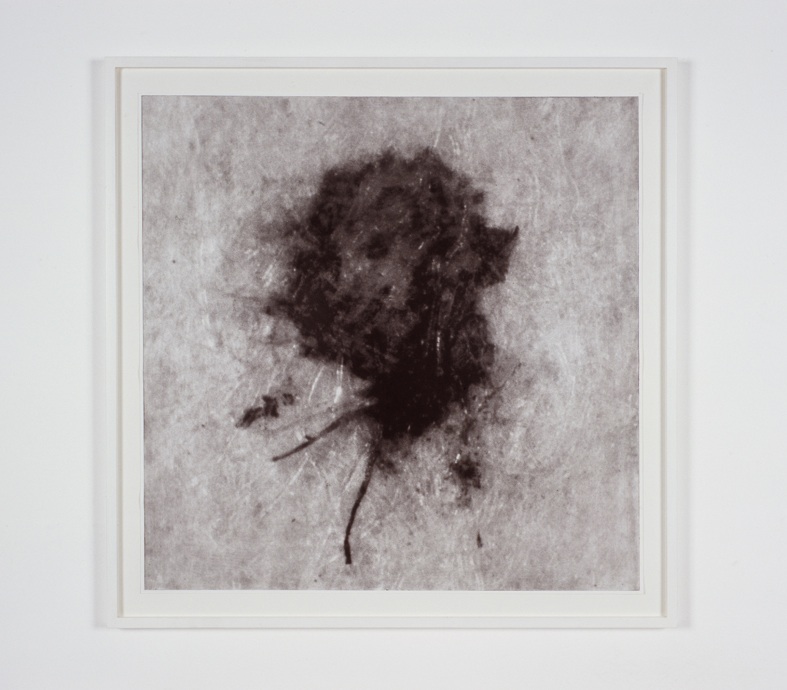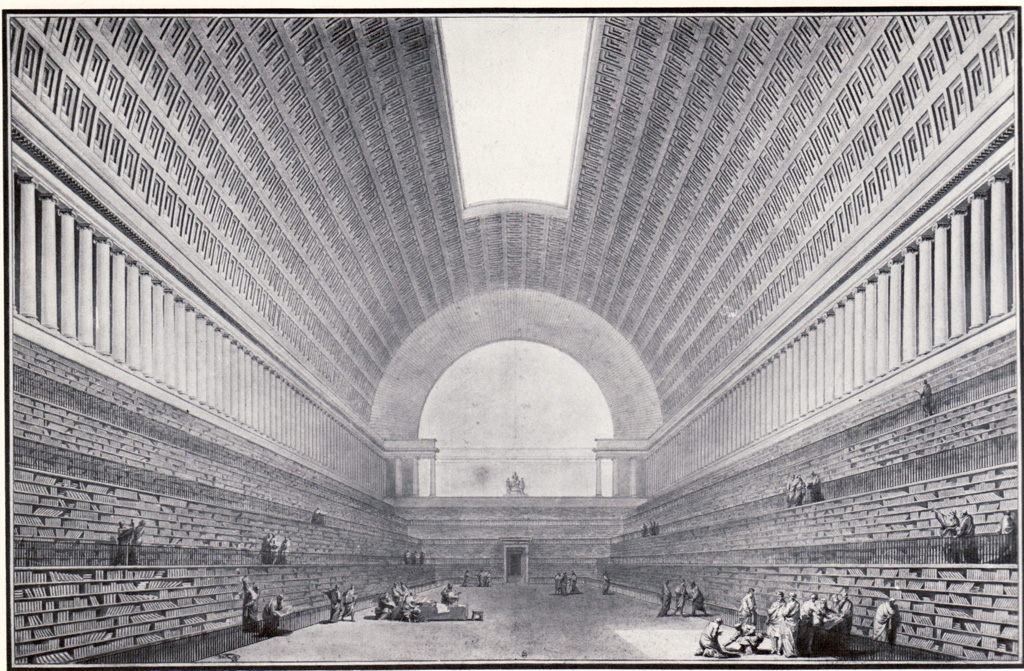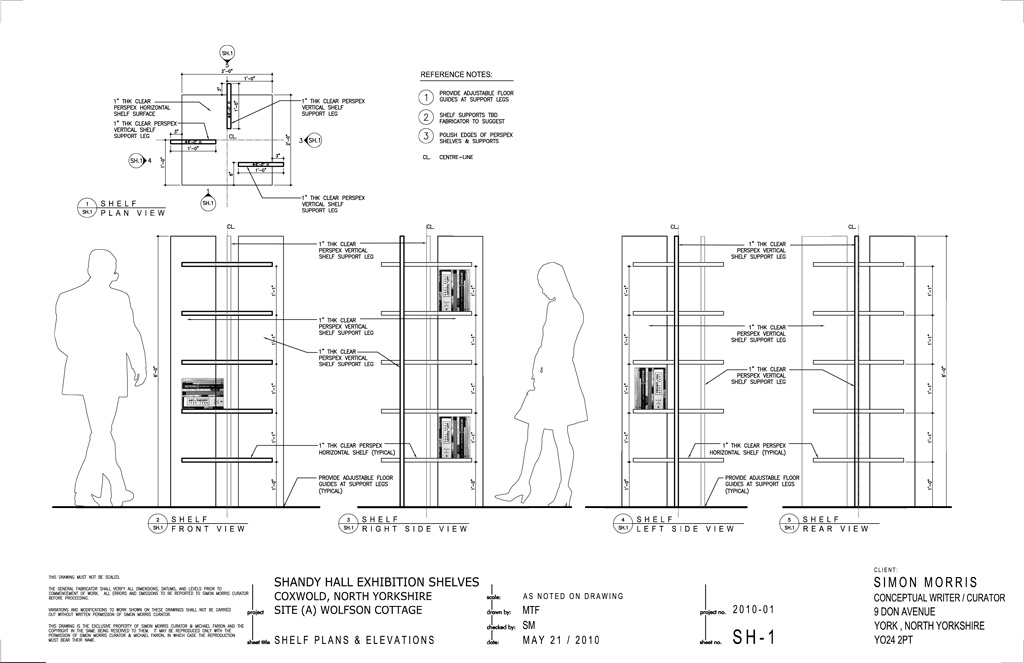“Writing is fifty years behind painting.” (Brion Gysin, 1959)
A major exhibition of ‘conceptual writing’ is coming to Yorkshire next month. A Perverse Library is the first exhibition of its kind in the UK and will - according to curator Simon Morris - “show work by a generation of artists who have sought a radical reconsideration of the relationship between literature and the visual arts”.
 Image, Scott Myles: Full Stop 2006 © the artist. The last full stop in Tristram Shandy from the first edition, blown up using photomicography at the University of Glasgow
Image, Scott Myles: Full Stop 2006 © the artist. The last full stop in Tristram Shandy from the first edition, blown up using photomicography at the University of Glasgow
Appropriately, the exhibition will take place at Shandy Hall, Coxwold: the former home of the celebrated 18th-century English writer Laurence Sterne (author of The Life and Opinions of Tristram Shandy, Gentleman), whose experimental spirit has had an astounding and continuing influence on the arts.
A Perverse Library draws from collections of work by internationally renowned artists and writers including: Kathy Acker, Ed Ruscha, Jen Bervin, Christian Bök, Kenneth Goldsmith, James Joyce, On Kawara, Sherrie Levine and the recent Northern Art Prize winner, Pavel Büchler.
The exhibition starts on 04 September 2010, and will run right through to 31 October 2010. There are a number of free bus services running between York train station and Shandy Hall. Click here to find out more, and to book your place before they all go!
 Étienne-Louis Boullée, Deuxieme projet pour la Bibliothèque du Roi (1785), used on the cover of Craig Dworkin's new book 'The Perverse Library'. Dworkin's collection of more than 2,000 volumes forms the centre piece of the exhibition in Coxwold.
Étienne-Louis Boullée, Deuxieme projet pour la Bibliothèque du Roi (1785), used on the cover of Craig Dworkin's new book 'The Perverse Library'. Dworkin's collection of more than 2,000 volumes forms the centre piece of the exhibition in Coxwold.
Questions about what and where writing is have always cut through and across the fields of philosophy, literary criticism and the arts. Whilst these questions are not new, nor specific to any one place, they have emerged as an essential concern for the Western European and American avant-garde.
Driven by 200 years of radical social change, ‘writing’ in the arts has continued to nourish an extremely rich field of praxis. Its discourses are irreducibly complex and beyond simple definition or catagorisation.
In part this is due to the breadth of work being progressed by individuals with wide ranging imperatives, working in equally diverse ways: Gertrude Stein to William James to Ezra Pound to James Joyce to Berthold Brecht to Samuel Beckett to Allen Ginsberg to John Cage to Roland Barthes to Jacques Derrida to Christian Bok to Steve McCaffery to Joanna Drucker to David Mamet to Caroline Bergvall to Jerome Bell to Craig Dworkin to Tim Etchells to Gillian Wearing to Mark Manders to Kenneth Goldsmith and on and on, and to name but a fraction of those who’s ideas continue to feed this nebulous and intangible ecology of ideas.
The complexity is owed also to the depth of critical thinking that questions about writing have fostered, couched in vocabularies that are often challenging, and often deliberately so: demanding the reader to renegotiate their relationship to the ‘text’.
Terms like conceptual writing, performance writing, writing with art, text based art, language art, l-a-n-g-u-a-g-e poetry, artists’ publishing etc… are only some of the terms used to describe only some of the outlets for these practices. Historically these terms have sat in opposition to traditional literary modes, as well to notions of new or creative writing, which have been favored by the mainstream.
In recent years the output of artists working in what the writer, Claire MacDonald has called “an expanded field of writing practice” have occupied public spaces, galleries, theatres, studios, libraries etc., and become manifest as books, pages, journals, multiples, paintings, scores, computer applications, sculptures, audio recordings, films, videos, performances, actions, events and ephemera etc.
 Image, architectural drawings of the 'invisible shelves' designed by Canadian architect Michael Farion,
Image, architectural drawings of the 'invisible shelves' designed by Canadian architect Michael Farion,
In A Perverse Library the output occupies writing, or the idea of writing itself. By adopting strategies of appropriation and/or rip-off “we are seeing whole texts moved around from one location to another. It is not just sampling language but moving entire texts from space to another”, as Simon Morris puts it. “I think there's something quite exciting about making new meaning whilst using exactly the same words as an other.”
If you are interested in knowing more about this field of art / writing practice then A Perverse Library is definitely an exhibition, even the exhibition not to be missed. If you do miss it though, we will be sure to get lots and lots of photos and video from the grand opening, which organisers have in the spirit of Sterne put the night before the exhibition closes.
 Hebe Media
Hebe Media